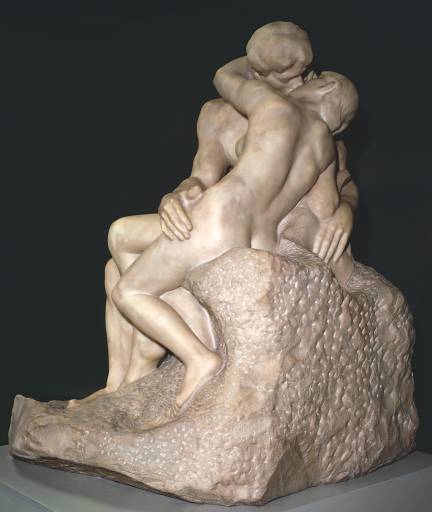Three days before Valentine’s Day, this week’s work of art is Auguste Rodin’s The Kiss. The passionately embracing couple appeared in their earliest incarnation as just one small element in the artist’s first significant commission, for a massive bronze doorway decorated with relief sculpture illustrating Dante’s Inferno, known as “The Gates of Hell”. Placed in the centre of the left-hand door panel, next to the figure of a woman with a child sitting on her lap, they seem to have been meant to symbolise sexual as opposed to maternal love. The composition stuck in the sculptor’s memory and he eventually decided to treat the theme on a monumental scale.
The Kiss illustrates a moment in the lives of a young man and woman whose tragic story was recounted in the Inferno. While visiting the second circle of Hell, dwelling place of those who had committed sins of the flesh, Dante encountered the shades of Paolo and Francesca, two ill-starred lovers famous in medieval Italy for the strength of their passion and the bloodiness of their death. Francesca, the daughter of Guida da Polenta, had married Gianciotto Malatesta, Lord of Rimini, in 1275. Her husband had entrusted her to the care of his handsome brother, Paolo, and they had fallen in love while reading the romances of the courtly love tradition. In Dante’s version of the story, they were first stirred to physical passion by the account in the Arthurian Legend of Lancelot’s first embrace of Queen Guinevere - one illicit affair engendering another. But Paolo and Francesca enjoyed the fruits of their forbidden love for a rather shorter time than Lancelot and Guinevere. No sooner had they kissed than Francesca’s husband Giancotto sprang from behind the arras and stabbed them both to death. “Love has led us...

ITP 43: The Kiss, by Auguste Rodin
11-02-2001

